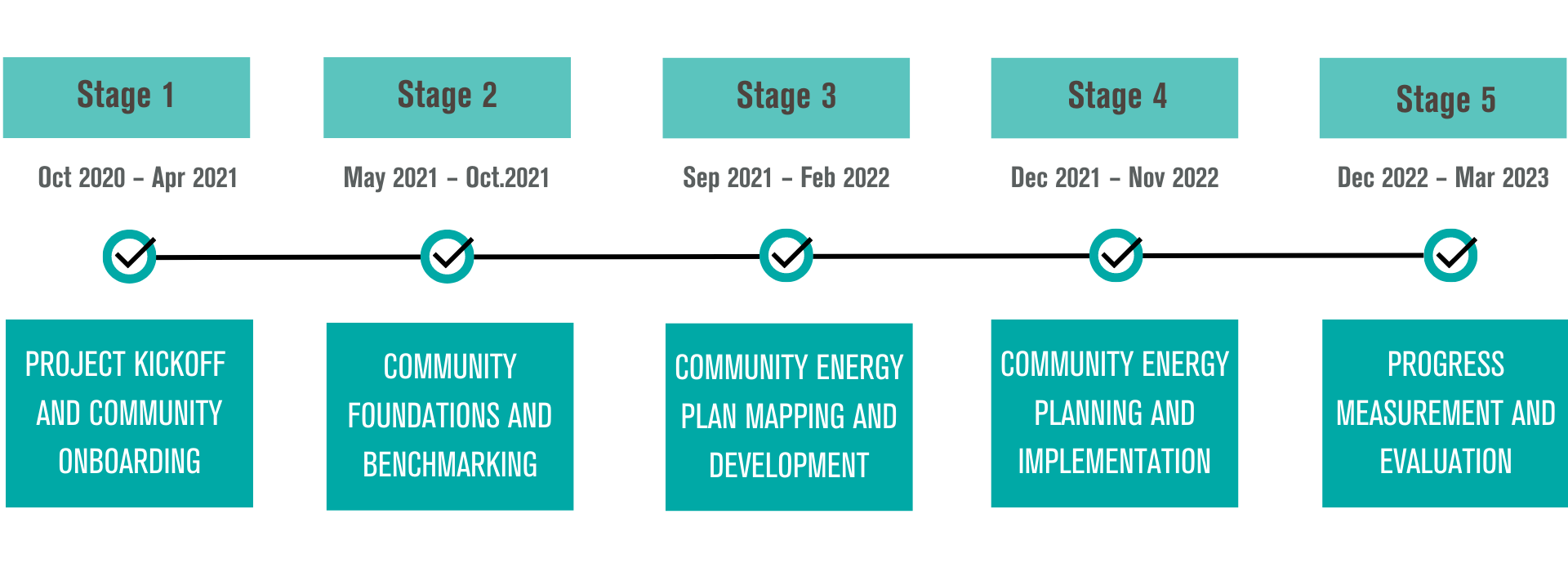New Brunswick Smart Energy Communities Accelerator Pilot Program
About the Project
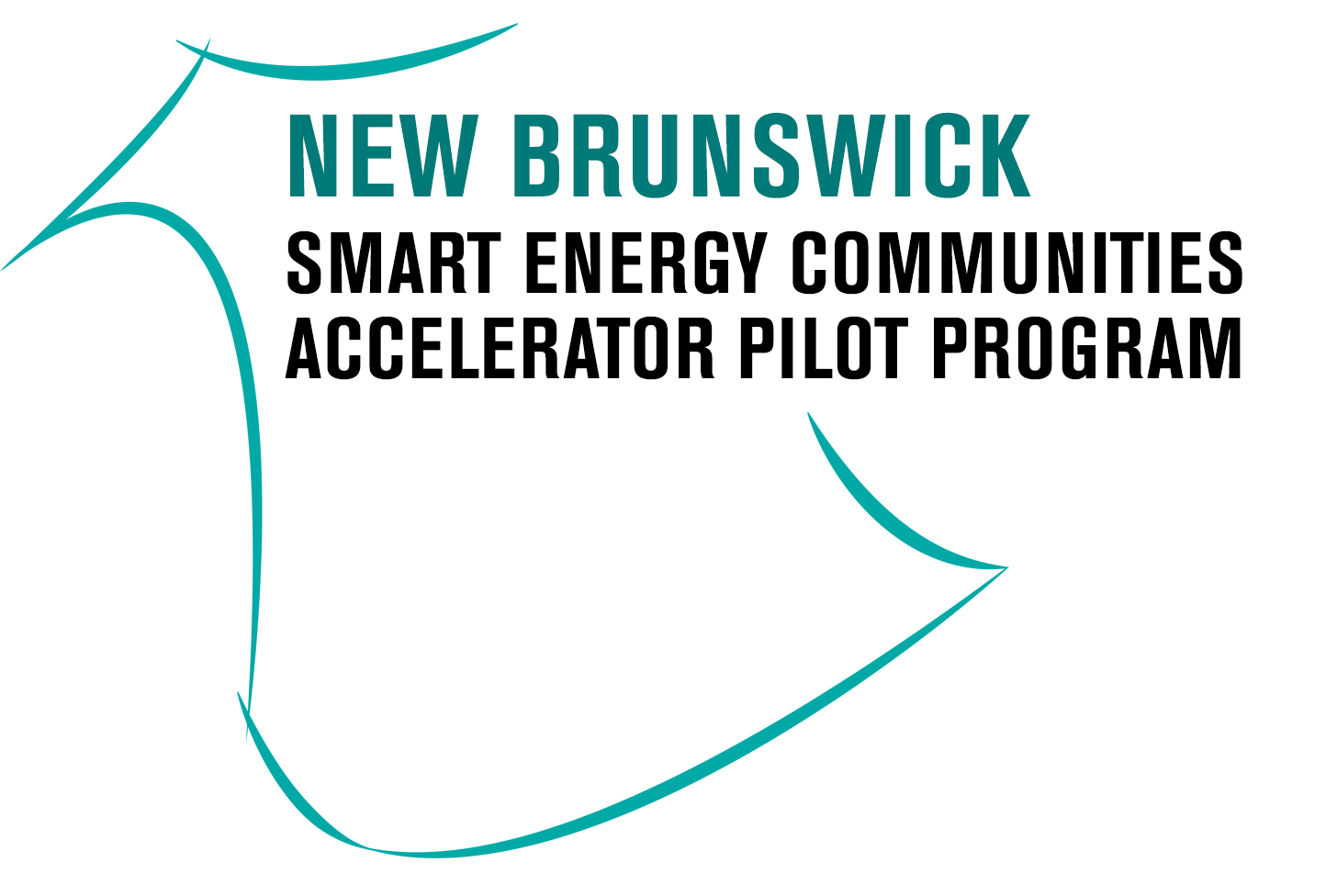
The NB SECA Pilot Program successfully established a community energy planning accelerator to assist a series of New Brunswick communities and one First Nation, equipping them with the tools and knowledge to develop and implement community energy plans and understand the net economic benefit they can provide.
Program Services & Tools
Participating Communities received support to guide them through the implementation of a Smart Energy Community Accelerator Plan, which included:
Utilizing established tools and processes to build the foundational knowledge and structure needed to effectively develop and action community energy and emissions plans and initiatives.
Providing access to custom coaching and navigation services.
Connecting communities to a robust network of peer communities to promote collaboration, knowledge sharing and to build collective energy literacy.
New Brunswick Pilot Communities
District of Carleton North
Learn more
Located in western New Brunswick, the Town of Florenceville-Bristol is located on the Saint John River and is part of Carleton County. With a population of 1,604 as of the 2016 census, Florenceville-Bristol is a rural community that has a rich agriculture heritage. The Town hosts corporate headquarters of McCain Foods, the largest producer of French fries in the world and for that reason, the Town is known as “The French Fry Capital of the World”.
Florenceville-Bristol has an average temperature of 11.5 degrees Celsius and reaches record lows of -37.8 degrees Celsius in winter months and 35.0 degrees Celsius in summer months. Florenceville-Bristol receives approximately 1,100mm of precipitation per year and experiences all 4 seasons. During spring months, flooding can occur along the Saint John River in low laying areas.
The Town aims to reduce their corporate greenhouse gas emissions 25% by 2027 from 2017 levels and their community greenhouse gas emission 10% by 2027 from 2017 levels. This will be done through a number of actions such as building retrofits, streetlight LED light bulb conversion and water conservation. Overall, the Town of Florenceville-Bristol is taking the correct steps to decrease their greenhouse gas emission, costs and increase the health of all its citizens.
Town of Oromocto
Learn more
Village of Southern Victoria
Learn more
Town of Quispamsis
Learn more
The population of Quispamsis in 2016 was 18,245 inhabitants spread over an area of 57.21km², a density of 318.9 hab./km². The Municipality had 6,596 private dwellings in 2016, of which 6,455 were occupied by full time residents. 57% of dwellings were built before 1991. Quispamsis is the sixth-largest municipality in New Brunswick.
Quispamsis, and the four other regional municipalities — Rothesay, Grand Bay-Westfield, St. Martins, and Saint John — and area private sector investors have given Enterprise Saint John the mandate to be the backbone organization for the region’s integrated economic development strategy — True Growth.
In 2017, MoneySence named Quispamsis the best place to live in Atlantic Canada.
Town of Salisbury
Learn more

Town of Sussex
Learn more
Today, Sussex is primarily a regional service centre for the surrounding agricultural communities of the upper Kennebecasis River valley. The town is a highway service centre on Route 1, the primary highway between Moncton and Saint John, as well as being the most heavily travelled route in the Maritimes to the United States.
Since 2003, natural gas has been available from the McCully field near Sussex. The potential local natural gas supply and the energy opportunities resulting from the recently closed Potash Company of Canada mine both support the goals of the town’s Community Energy Plan and its economic development objectives.
Town of Saint Andrews
Learn more
St. Mary’s First Nation
Learn more
Municipal District of St. Stephen
Learn more
Town of Woodstock
Learn more
Town of Riverview
Learn more
Riverview is a town in Albert County, New Brunswick, located on the south side of the Petitcodiac River, across from the larger cities of Moncton and Dieppe. Riverview is the largest town in New Brunswick, and despite being designated as a town it is the fifth-largest municipality in the province, with a population of 20,584 in 2021.

Association francophone des municipalités du Nouveau-Brunswick partner communities
Nine partner communities, through partnership with the Association francophone des municipalités du Nouveau-Brunswick, are participating in the NB SECA Program.

Village de Cap-Pelé
Learn more

Village de Nigadoo
Learn more

Communauté Rurale de Saint-André
Learn more

Village de Saint-Isidore
Learn more
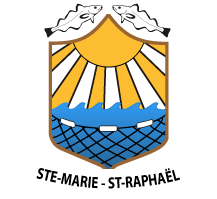
Village de Ste-Marie-St-Raphaël
Learn more

Village de Dieppe
Learn more
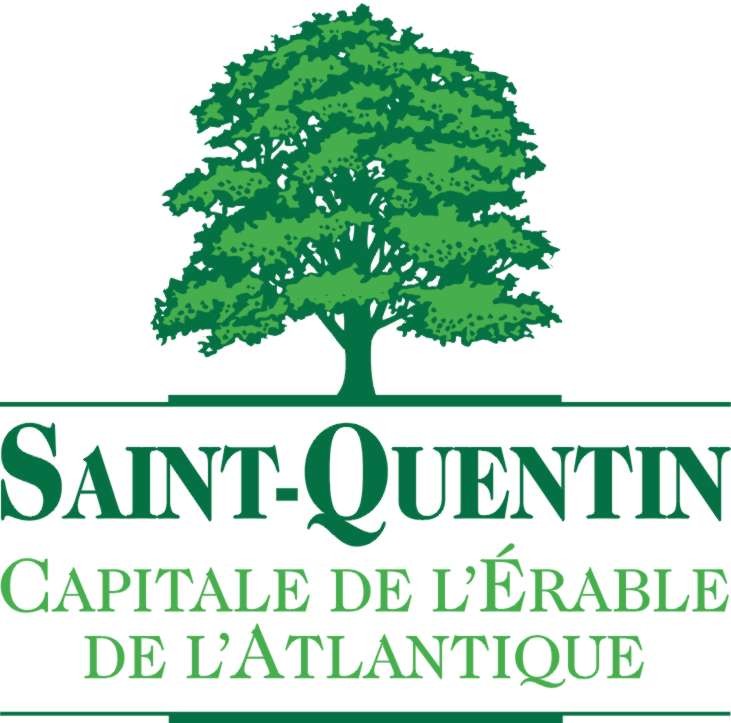
Village de Saint-Quentin
Learn more

Village de Hautes-Terres
Learn more

Village de Grand Sault
Learn more

Ville d’Edmundston
Learn more
Ville d’Edmundston is a city in Madawaska County, New Brunswick, located at the edge of the New Brunswick “panhandle,” in the northeastern section of the Appalachian Mountains at the junction of the Saint John and Madawaska Rivers. Established in 1850, on January 1, 2023, Edmundston amalgamated with the village of Rivière-Verte and parts of two local service districts, with a population of 16,437 as of 2021.

Eel River Bar
Learn more
Ugpi’ganjig, or Eel River Bar First Nation is a Mi’gmaq community located in Northern New Brunswick and situated along the shores of Bay of Chaleur at the mouth of the Eel River. It is home to 350 on-reserve residents, and 733 total proud Mi’gmaq community members.
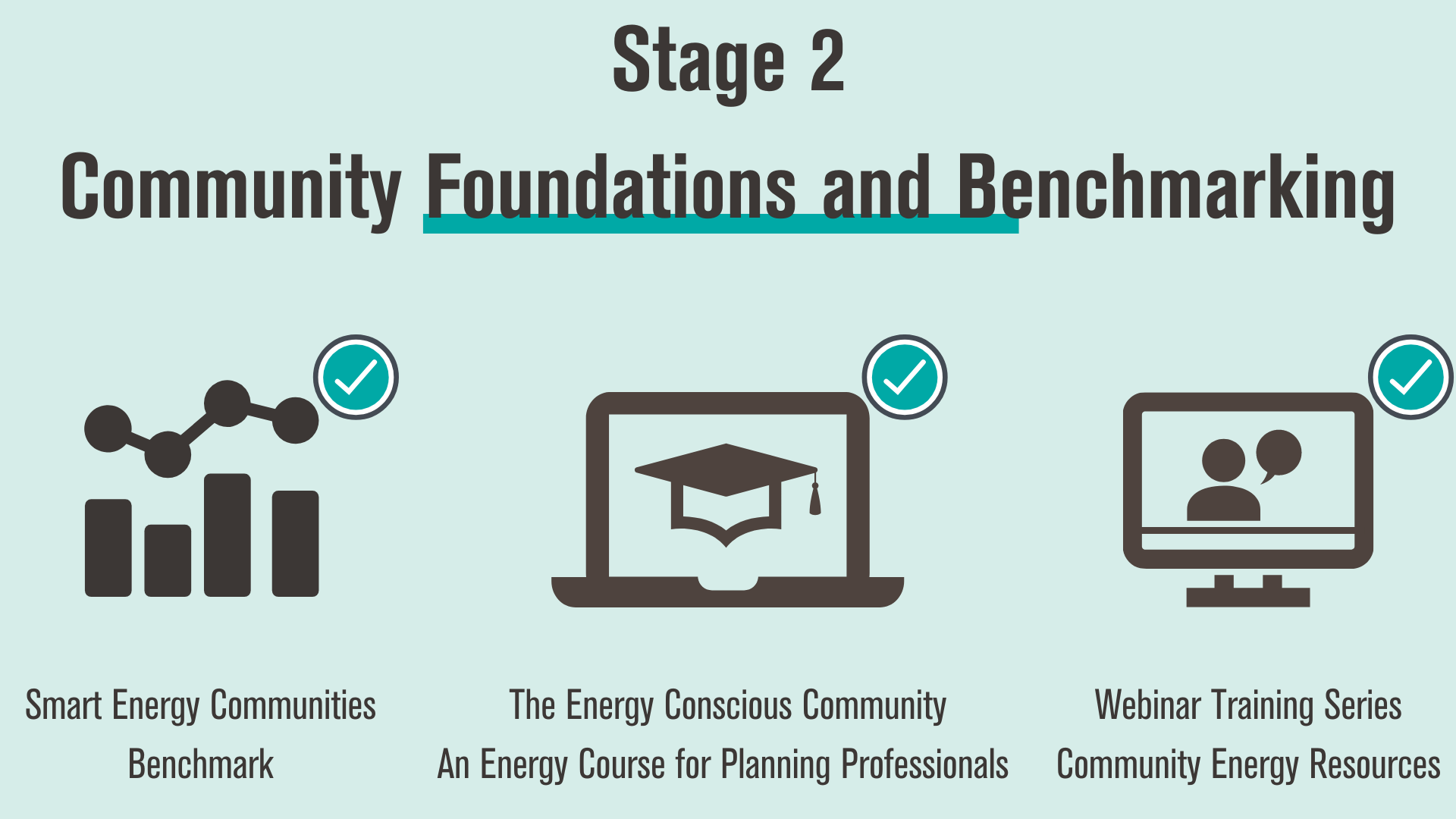
Stage 2 Achievements
1. The Smart Energy Communities Benchmark
2. The Energy Conscious Community: An Energy Course for Planning Professionals
3. Webinar Training Series on Community Energy Resources
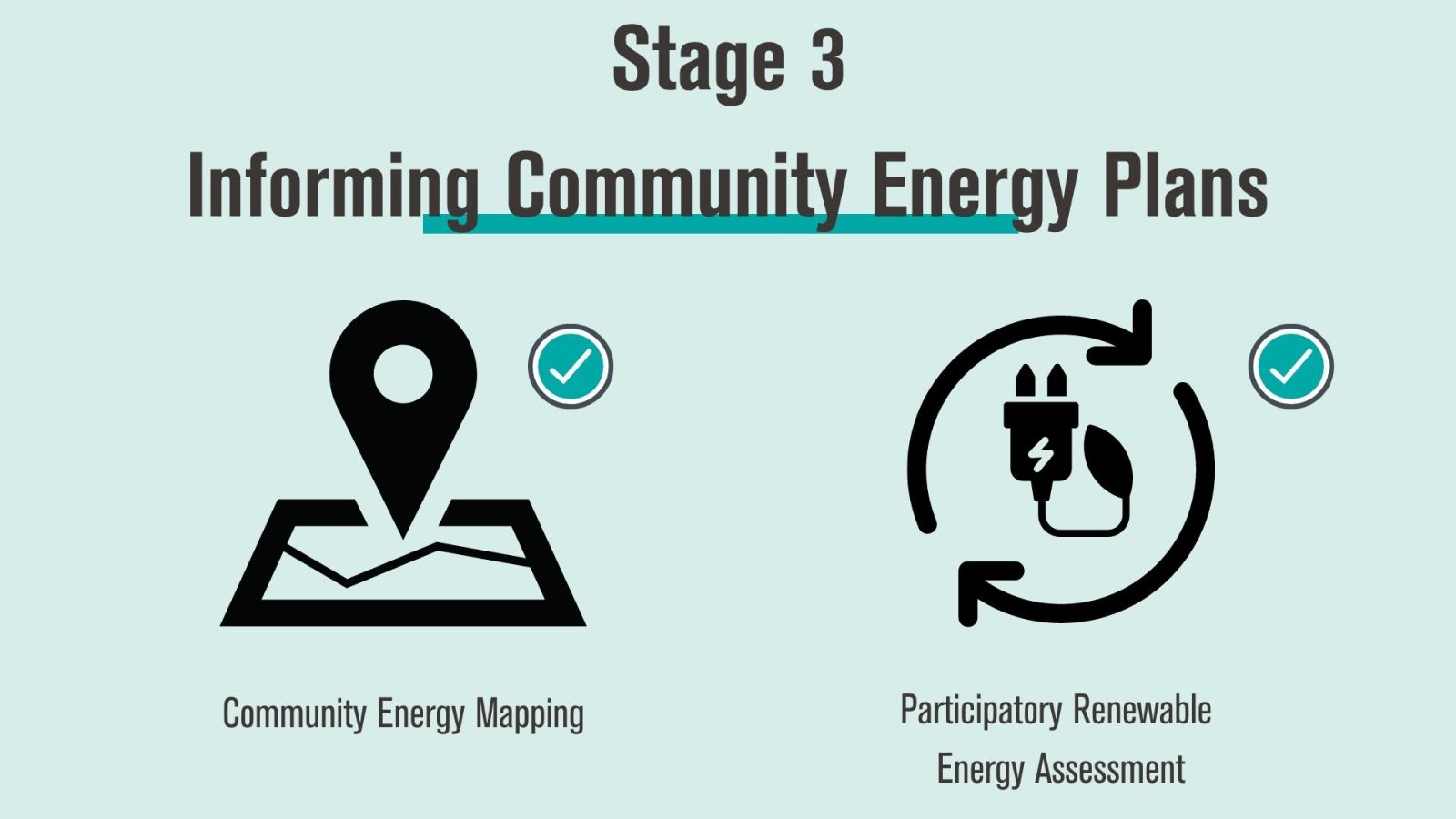
Stage 3 Achievements
1. Community Energy Mapping
2. Participatory Renewable Energy Assessment
Stage 4 Achievements
1. Community Energy Planning
- Community Energy Plan Development workshops utilized interactive exercises that engaged diverse local participants in each community to develop energy and emissions targets and prioritize corresponding action strategies to achieve them.
- The results have been used to inform the development of their local Community Energy Action Plans.
Completed July 2022
2. Economic Analysis
Completed July 2022
3. Community Energy Implementation
- The Community Energy Plan Implementation Frameworks were developed via workshops that utilized interactive exercises that engaged diverse local participants in each community to develop implementation strategies for the actions developed in their local plans.
- These frameworks are PCP Milestone compliant and provide communities with the necessary key governance and strategic frameworks for successful local plan implementation.
Completed Sept 2022

Stage 5 Achievements
1. Completion of Re-Benchmarking
- Participating communities underwent a Smart Energy Communities Benchmark re-benchmarking process to document and celebrate the great progress made during their participation in the NB SECA program.
- Participating communities increased their scores by an average of 14%.
Completed March 2023
2. Project Evaluation
QUEST Canada has completed a project evaluation with a third-party evaluator. The developmental evaluator found that the pilot program provided high quality services to New Brunswick municipalities, giving participants the knowledge, skills and expertise needed to create their own individual CEEPs. The plans and the resulting integration into longer-term planning documents, policy development and built environment changes will sustain their shift into a net-zero future.
Completed March 2023
Next Steps
With the completion of the re-benchmarking process—NB SECA’s final program milestone—QUEST Canada will prepare for the program’s extension. The program will be extended by one year with a dual purpose: to provide additional support to participating communities addressing post-municipal reform to ensure their CEEPs are up-to-date, and to equip a new cohort of New Brunswick communities to develop and implement CEEPs.
Program Outcomes
Enhanced and ongoing knowledge sharing and support around community energy planning for 14 New Brunswick communities, including one First Nation.
The development and implementation of tailored Accelerator plans and Summary Reports to help NB SECA participants assess their current achievements and next steps related to community energy planning.
Case Studies to assess the economic impact of elements of Community Energy Plans, and a report that uses these case studies to extrapolate the impact of implementing all CEPs in New Brunswick to help inform the province’s economic recovery strategy post-COVID.
Lessons learned and results that can be shared with interested stakeholders both regionally and nationally.
Resources
CEEP Resources
QUEST Canada Resources
- Resource Guide to Community Net-Zero Action
- QUEST Canada’s CEP Primer for NB Municipalities
- QUEST Canada’s SEC Benchmark Tool
- QUEST Canada’s Economic Impact Assessment Workbook
Partners for Climate Protection (PCP) Resources
- PCP’s Milestone Tool
- PCP’s website
- PCP’s Hub
MEED Resource
NB SECA Communities In the News
Program Funders





For more information about the program, please contact Seth Leon, Projects and Programs Manager, at QUEST Canada at sleon@questcanada.org or 866-494-2770 e.705.
Empowering Canadian Communities
QUEST Canada develops and implements projects with the aim to nurture strategic partnerships, facilitate connections, empower community champions, and advise decisions makers, supporting communities across Canada on their pathway to net zero. Find out more about our projects:
Data Table Test Page
Data Table Explaination on the data table and what it can be used for.Table Legend & Definitions Each item in the filterable table of items relates to 4 energy policies. Explore the dropdowns below to learn more about the policy's topics, metrics, and sub-metrics...
Pan-Atlantic NCA
QUEST Canada’s Net-Zero Communities Accelerator (NCA) Program has been recognized with a prestigious 2025 Clean50 Top Project Award. The annual awards recognize initiatives based on their innovation, their ability to inform, and to inspire Canadians.
QUEST Canada’s Pan-Atlantic NCA Program enables Atlantic Canada communities to reach net zero by equipping them with the tools and knowledge to develop and implement community energy and emissions plans and understand the net economic benefits they can provide.
Energy Transition Policy Program
The objective of QUEST Canada’s Energy Transition Policy Program is to engage in a collaborative discussion with energy decision-makers to align climate and energy transition planning and policies that will facilitate sustainable community energy systems in support of a net-zero carbon (carbon neutral) economy by 2050.











